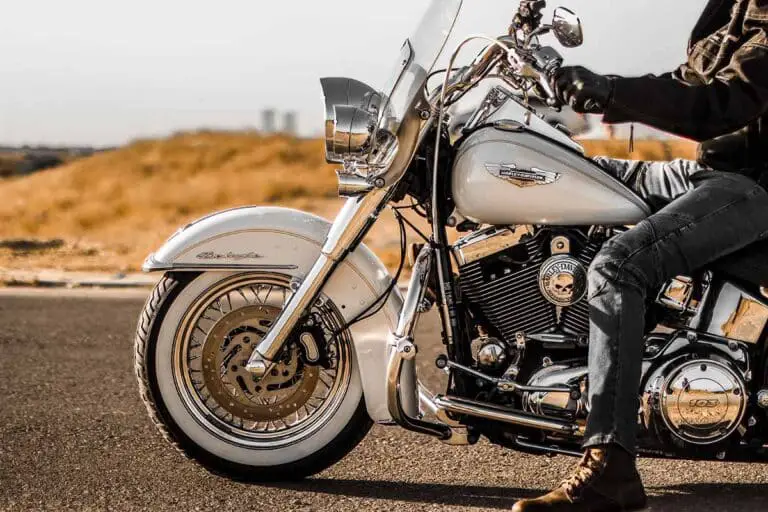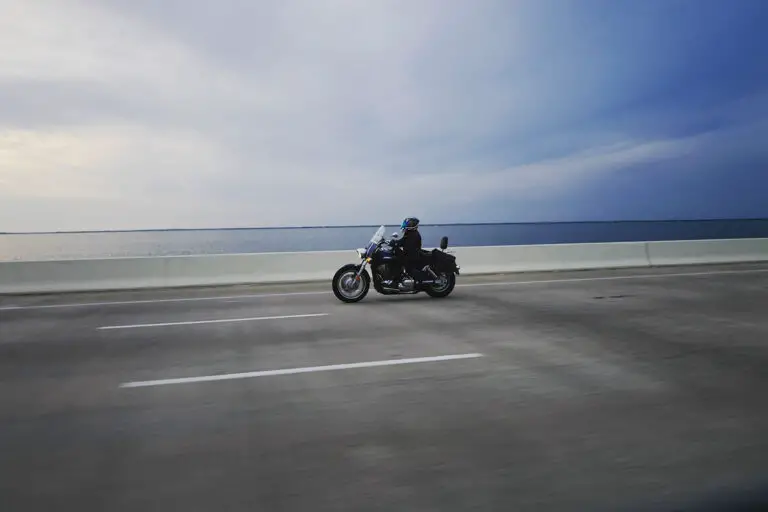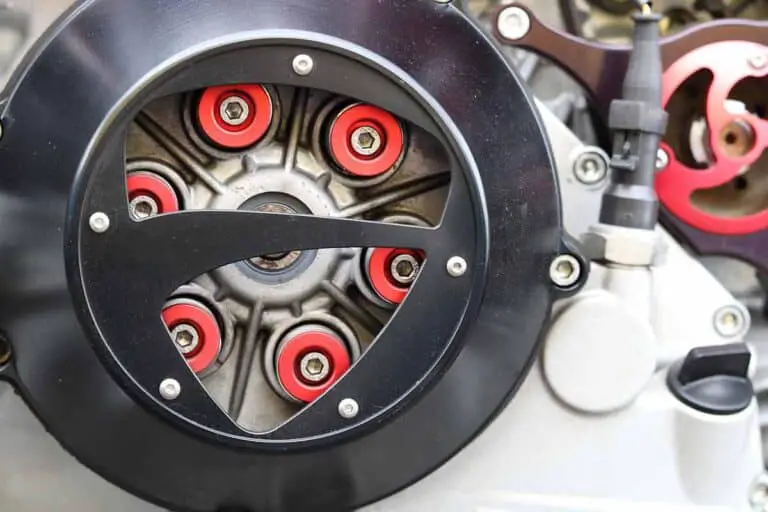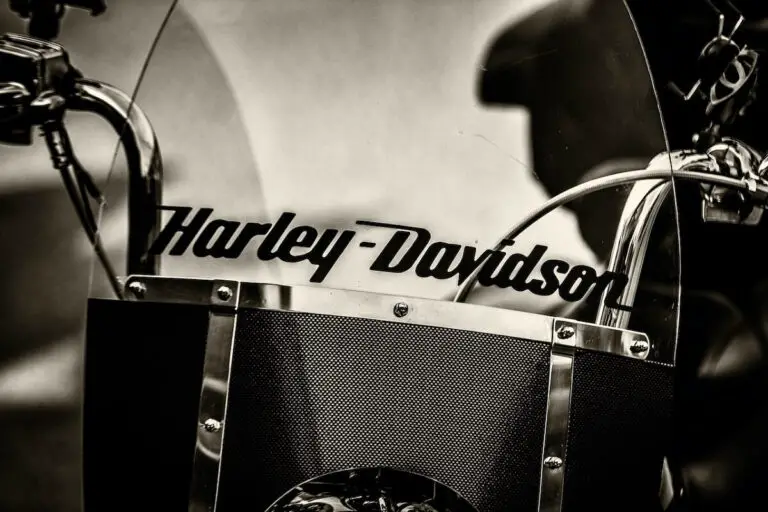Different Types of Motorcycle Fuel Tanks
Disclosure: We may get commissions for purchases made through links in this post.
The fuel tank is an essential part of a motorcycle’s fuel system. It stores and provides fuel to the engine. There are different types of fuel tanks, which we will cover in this guide, along with their pros and cons.
Knowing the different types can help with maintenance. For instance, removing rust and general upkeep.
The below lists consolidate motorcycle fuel tanks based on two categories.
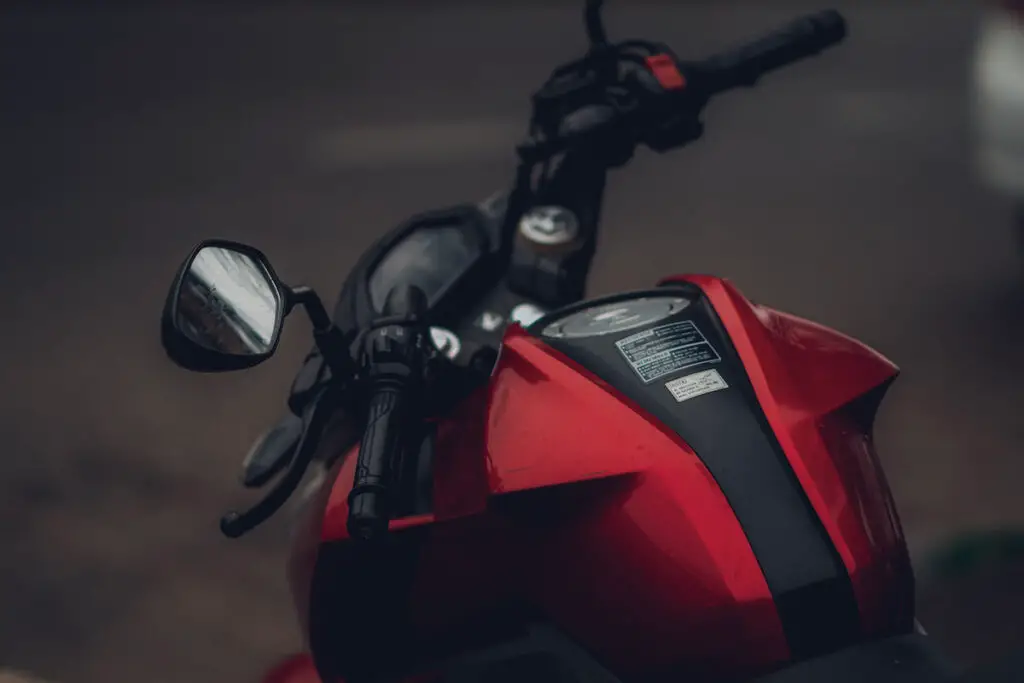
By Design
Standard tank
The standard tank is the most common and widely used fuel tank. It has a traditional design with a rectangular, cylindrical, or teardrop shape. It can typically hold around 10—20 L (2.6—5.3 USgal) or more, and its filler cap is located on the top (making for easier refueling).
The standard tank securely fastens to a motorcycle’s frame using fasteners, bolts, and brackets and is often finished to match a bike’s overall styling and color scheme.
Pros & Cons: While good fuel capacity is a big plus, some standard tanks with this design may have limited customization options due to their common design.
Peanut tank
Peanut tanks are small, compact, and have a rounded, peanut-shaped design (hence the name). They are often found on classic or custom bobber-style motorcycles since they add character and style to these motorcycle types.
They are secured to the motorcycle’s frame using a similar attachment method as most other types of tanks and usually hold approximately 8.3—12.5 L (2.2—3.3 USgal) of fuel.
Pros & Cons: While having a sleek and minimalist look is an aesthetic win, these tanks may not be suitable for long-distance rides due to their smaller fuel capacity that requires more frequent refueling.
Fat Bob tank
Initially designed for Harley-Davidson’s Fat Bob model, Fat Bob tanks feature a large, muscular, and elongated shape that provides ample fuel capacity and complements the aggressive stance of heavy-weight cruisers.
They generally hold around 13.6—17.8 L (3.6—4.7 USgal) of fuel and are mounted to the bike’s frame using specialized brackets and fasteners. Unlike standard tanks, Fat Bobs are ideal canvases for customization.
Pros & Cons: While stylish and boasting a large fuel tank capacity, Fat Bob tanks can add extra weight to the motorcycle (potentially affecting handling and maneuverability).
Frisco tank
Frisco tanks have a custom-friendly design favored by hardcore bobber-chopper fanatics and outfitters. Instead of just sitting atop the frame or between the rider’s thighs, it is positioned higher and more toward the front of the motorcycle — creating a distinct raised tunnel visual.
Moreover, it features a narrow and elongated shape, often with a curved or teardrop silhouette. Some even have stretched sides or scalloped edges, enhancing their already-unique look.
Pros & Cons: Frisco tanks offer a customized look and additional ground clearance, lending to improved maneuverability and lean angles. However, a smaller fuel tank capacity is expected, given its compact design.
Coffin tank
As its name suggests, the coffin tank design resembles the unconventional silhouette of a coffin — long and rectangular with straight sides and sharp corners. Its top surface is typically flat, while the bottom can be contoured to match the part of the motorcycle frame where it will be mounted.
Capacity-wise, these tanks are pretty flexible, holding around 7.6—22.7 L (2—6 USgal) of fuel or more, depending on bike displacement.
Pros & Cons: While they are a great focal point of customization, their elongated shape may restrict the motorcycle’s fuel capacity.
Dish tank
The dish tank is another fuel tank in vintage or classic motorcycles. Dished tanks have a concave, recessed, or dished-in area in the middle section, adding depth and visual appeal to their profile.
The amount of fuel carried is not necessarily affected by tanks of this design since they are available in different capacities. As for mounting, the tank is typically positioned below the rider’s seat and centered on the motorcycle using specific brackets and mounts.
Pros & Cons: Dished tanks rank high in aesthetics. However, fuel can pool in concave or recessed areas of the tank.
By Construction
Steel tank
Steel tanks are common in motorcycles and are known for their durability, strength, and impact resistance. They are relatively more affordable than other types of fuel tanks and compatible with various fuels, ensuring safe containment and preventing leaks/spills.
However, an important consideration with these tanks is their susceptibility to rust. Steel is prone to corrosion when exposed to moisture and oxygen.
If the tank’s protective finish or paint is damaged or worn, moisture can come into contact with the steel, leading to rust formation over time. To prevent rust formation, steel tanks are commonly coated with protective finishes that create a moisture barrier, minimizing the chances of rust.
Aluminum tank
Aluminum tanks provide a range of benefits. They offer a high strength-to-weight ratio and excellent corrosion resistance.
They enhance handling, fuel efficiency, and overall performance — on top of safely containing various fuels, such as gasoline and ethanol blends, and preventing leaks and spills during operation. Due to their lightweight construction (usually from aluminum sheets or panels), they are ideal for high-performance motorcycles.
But while aluminum is highly resistant to rust, it is not entirely impervious to corrosion. Rust may occur if the protective oxide layer of the tank is damaged or compromised, exposing the underlying aluminum to moisture and other corrosive agents.
Factors such as inadequate maintenance practices, scratches, or physical damage can likewise increase the risk of corrosion.
Plastic tank
Plastic tanks, commonly crafted from robust plastic polymers like HDPE (high-density polyethylene), provide notable weight reduction compared to metal tanks. This results in enhanced fuel efficiency and handling, lower greenhouse gas emissions, and reduced impact on landfills.
Moreover, they can safely store different fuel types, including gasoline, diesel, and ethanol blends, ensuring secure containment and minimizing the risk of leaks or spills.
A key advantage of plastic is its inherent corrosion resistance, eliminating the need for additional protective coatings or treatments to prevent rust formation. This material is less prone to scratches, dents, and paint chipping. However, take care not to expose it to harsh chemicals that may cause plastic degradation, as any visible cracks or damage would warrant a tank replacement.
Composite tank
Made from fiberglass, carbon fiber, or Kevlar reinforced with a polymer resin, composite tanks offer excellent strength-to-weight ratio, corrosion resistance, and fuel compatibility (among other benefits).
Their inherent corrosion resistance eliminates the need for rust-preventive treatments and additional protective coatings. However, it is still essential to follow OEM guidelines for maintenance and repair to ensure the longevity and performance of this specific tank.

